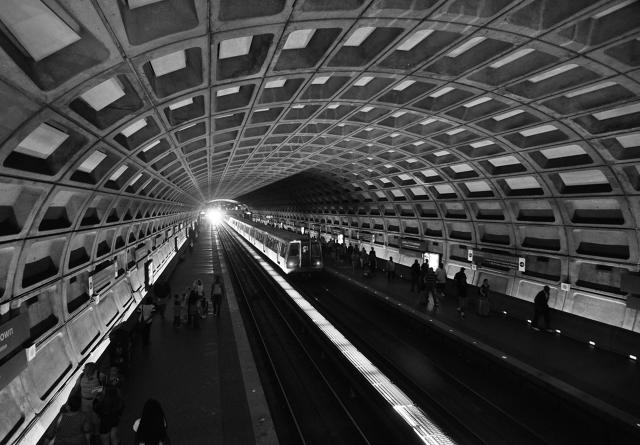For fans of the oft-maligned style, D.C. is paradise. How did it get that way?
Washington, D.C., is a sea of exalted obelisks, elegant monuments, and at least one vaunted architectural expression of cultural experience. In contrast, its many hulking, concrete-clad Brutalist buildings might seem like boring, unfinished afterthoughts, but many of these buildings are unsung masterpieces that speak to a specific moment in governmental architecture—one that Architect magazine associate editor Deane Madsen celebrates in a new annotated map of 40 Brutalist buildings called Brutalist Washington.

"While D.C. might be better known for its neoclassical monuments, it could just as easily be recognized for its many million-square-foot government agency offices," Madsen says.
In 1945, Congress passed an urban renewal plan that called for the demolition of blighted residential properties in southwest D.C. and the construction of a new business district. It was a controversial plan: Congress cited eminent domain laws, a notoriously problematic policy, and some D.C. property owners sued saying they did not receive just compensation in a case that made it to the Supreme Court.

Once the plan was in place, the city needed to build fast and at scale. Additionally, a federal mandate stipulated that new buildings shouldn't reveal what agencies they housed and should express a new, business-oriented image that was wholly different from the classical architectural motifs used in previously constructed government buildings. A 1961 document issued by the National Capital Planning Commission, which oversees planning for federal buildings in D.C., stated: "The typical monumental enclosure of everyday governmental business functions inevitably results in a confusion of form and purpose." (Looks like the architectural fun police won here.)
The efficiency and affordability of concrete—Brutalism as a style refers to the French term béton brut, meaning raw concrete—made it the material of choice for the modern architects (who by philosophy don't use ornamental flourishes in their work) commissioned to design the sober structures.
The Brutalist Washington map lists the locations of the most essential Brutalist buildings in D.C., but also includes black-and-white photographs of the sites, and info on who designed each one. Some of Madsen's highlights? The handful of Marcel Breuer designs; the Robert C. Weaver Federal Building, which is HUD's HQ; the Hubert H. Humphrey Building, home to the United States Department of Health and Human Services; the Hirshhorn Museum by Gordon Bunschaft; and the Women's National Democratic Club Annex by Nicholas Satterlee.

"Architects practicing in that era might not have considered themselves to be Brutalists," Madsen points out. "In fact, Araldo Cossutta, who was one of I.M. Pei's protégés and was responsible for L'Enfant Plaza North and South as well as the Third Church of Christ Scientist, demolished in 2014, insisted in a recent interview published in Heroic: Concrete Architecture and the New Boston, that he was not one, saying, 'I resent the word Brutalism being attached to my work in any way.'"
The map is the latest in what seems like a flurry of books, trendstories, and installations that speak to a rediscovery of Brutalism. (Some designers have even co-opted the term to describe a deliberately ugly web-design aesthetic.)

Madsen hopes Brutalist Washington sparks more awareness and appreciation for the style, which is often deemed ugly and destined for the demolition ball. By celebrating the style, he hopes to convert a few casual fans into vocal preservation advocates.
"Brutalism in the U.S. is reaching an age where, in many cases, deferred maintenance or flat-out neglect means that Brutalist buildings are falling into disrepair, but they're not yet old enough to be landmarked," Madsen says. "As more and more of these buildings face either renovation or demolition, proponents of the style are coming forward to extol its virtues and combat misunderstandings about what Brutalism is. The raw materiality of Brutalist buildings and the honest expression of their structure are qualities that are easy to appreciate in times that call for increased transparency."
Purchase the map for $10 from bluecrowmedia.com.
[All Photos: Deane Madsen]